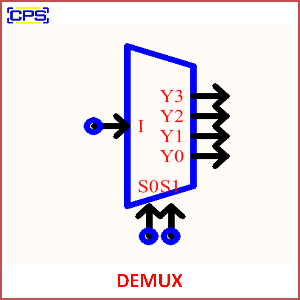A Demux (Demultiplexer) is a digital logic circuit that takes a single input signal and routes it to one of many output lines based on a set of control signals. It essentially performs the reverse operation of a multiplexer (Mux).

Key Features of a Demux:
- Input and Outputs:
- One input line.
- Multiple output lines, typically 2n2^n2n, where nnn is the number of control lines.
- Control Signals:
- Determines which output line the input signal will be sent to.
- Functionality:
- At any time, only one output line is active, and it carries the input signal.
Truth Table Example (1-to-4 Demux):
| Control Lines (C1, C0) | Active Output |
|---|---|
| 00 | Output 0 |
| 01 | Output 1 |
| 10 | Output 2 |
| 11 | Output 3 |
Applications:
- Data Distribution: Used in communication systems to distribute a single data stream to multiple receivers.
- Memory Decoding: Selecting memory addresses in computer systems.
- Display Systems: Driving LED displays by selecting specific segments.
- Control Systems: Activating specific devices or components.
A Demux is a fundamental building block in digital electronics, enabling efficient data routing and control in complex circuits.
